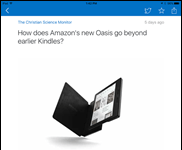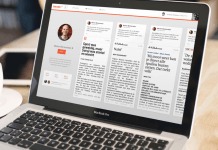
The Pew Project for Excellence in Journalism has published its The State of the News Media 2011 report. Here are some snippets:
Less progress has been made charging for news than predicted, but there are some signs of willingness to pay. The leading study on the subject finds that so far only about three dozen newspapers have moved to some kind of paid content on their websites. Of those, only 1% of users opted to pay. And some papers that moved large portions of content to subscription gave up the effort. A new survey released for this report suggests that under certain circumstances the prospects for charging for content could improve. If their local newspaper would otherwise perish, 23% of Americans said they would pay $5 a month for an online version. To date, however, even among early adopters only 10% of those who have downloaded local news apps paid for them (this doesn’t include apps for non-local news or other content). At the moment, the only news producers successfully charging for most of their content online are those selling financial information to elite audiences — the Financial Times is one, the Wall Street Journal is another, Bloomberg is a third — which means they are not a model that will likely work for general interest news. …
The new conventional wisdom is that the economic model for news will be made up of many smaller and more complex revenue sources than before. The old news economic model was fairly simple. Broadcast television depended on advertising. Newspapers on circulation revenue and a few basic advertising categories. Cable was split half from advertising and half from cable subscription fees. Online, most believe there will be many different kinds of revenue. This is because no one revenue source looks large enough and because money is divided among so many players. In the biggest new revenue experiment of 2010, the discount sales coupon business led by Groupon, revenue can be split three ways when newspapers are involved. On the iPad, Apple gets 30% of the subscription revenue and owns the audience data. On the Android system, Google takes 10%. News companies are trying to push back. One new effort involves online publishers starting their own ad exchanges, rather than having middlemen to do it for them. NBC, CBS and Forbes are among those launching their own, tired of sharing revenue and having third parties take their audience data. …
People are spending more time with news than ever before, according to Pew Research Center survey data, but when it comes to the platform of choice, the web is gaining ground rapidly while other sectors are losing. In 2010, digital was the only media sector seeing audience growth. And cable news joined the ranks of older media suffering audience decline.
Source: Nielsen Media Research, Pew Research Center for the People & the Press, Audit Bureau of Circulations. 1
Digital: In December 2010, 41% of Americans cited the internet as the place where they got “most of their news about national and international issues,” up 17% from a year earlier. When it came to any kind of news, 46% of people now say they get news online at least three times a week, surpassing newspapers (40%) for the first time. Only local TV news is a more popular platform in America now (50%). The new wild card in digital is mobile. A new survey released as part of the State of the News Media find finds that 47% of Americans now say they get some kind of local news on mobile devices such as cellphones or other wireless devices (such as iPads). As of January 2011, just 7% of Americans owned electronic tablets, according to our new survey, but that is nearly double from four months prior; and 6% of American adults have e-readers.


































